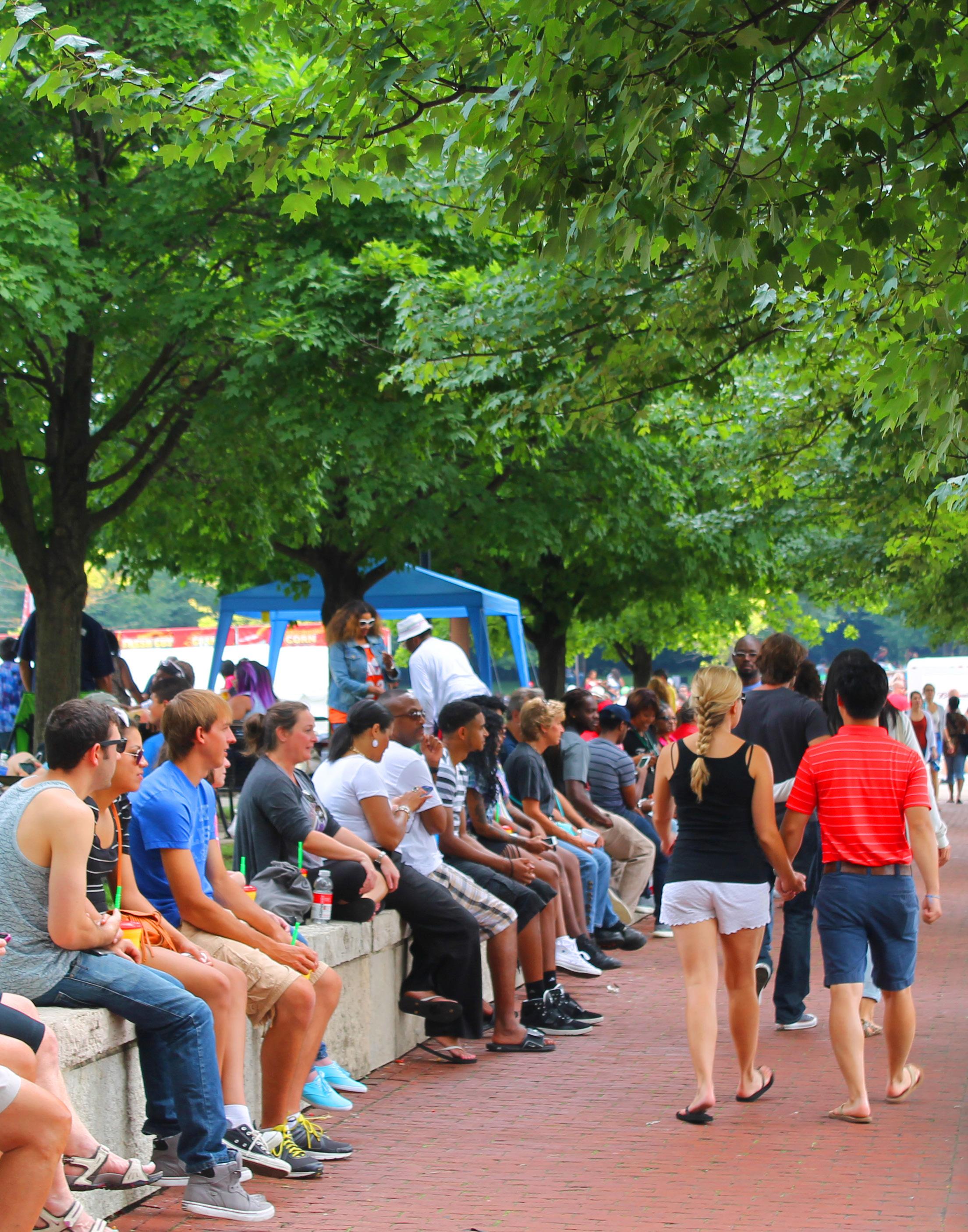
4 minute read
Goals
GOALS
Goal 1 Reach Citywide Tree Canopy Cover of 40% by 2050
High levels of health, quality tree canopy is critical for Columbus to remain a livable city. It is especially important as stressors increase as the climate warms and high population growth is expected. Tree canopy significantly reduces heat stress and air pollution, which has significant impacts on public health. It also reduces water pollution (by managing stormwater runoff), enhances property values, provides wildlife habitat, aesthetic benefits and even improves social ties among neighbors. Business districts are also more successful in areas with robust tree canopy.
Columbus must strive for a much higher canopy cover of 40% in order to remain livable and resilient in the years to come. This will be a challenge, but follows an industry standard and was clearly called for from the community (see sidebar). It is important to recognize that Columbus' canopy level was measured at 22% in 2013 and may be currently be lower than 22% considering population growth and the impact to ash trees from emerald ash borer. While this goal will take many decades to reach, it is critical for a livable community in the decades to come.
Consider that to increase citywide canopy by 1% (to raise canopy to 23% citywide), an additional 1,800 acres of tree canopy is required. That is approximately the same amount of land on the OSU main campus (1,726 acres).
Where Did the 40% Canopy Goal Come From?
There is an suggested industry standard that communities should consider striving for 75% tree canopy of what was determined as possible in that community (Kenney et al, 2011). In Columbus, the most recent tree canopy assessment stated that if all non-concrete surfaces in the city were planted with trees (excluding inappropriate areas like agricultural fields, sports fields, etc), that Columbus could potentially reach a 59% tree canopy cover (Plan-It Geo, 2015). Using the industry suggested standard of achieving 75% of what is possible (59%), that equates to 44% canopy coverage. 40% was used as a rounded number for ease of communication and measurement. A canopy goal of 40% was widely supported, by 70% of the Advisory Group members and the majority of the community input in order to achieve the highest quality of life for residents in the long term.
Goal
2
Stop the Net Canopy Losses by 2030
Invest in Equitable Canopy Across All Neighborhoods by 2030
In order to make real gains in canopy cover called for in Goal #1, the sources of tree loss must be addressed.
Only one tree canopy study has been conducted to date (Columbus, Ohio Urban Tree Canopy Assessment, published in 2015 based on 2013 imagery), so exact numbers on the amount of tree loss in Columbus is unavailable. However, population growth and the effects of emerald ash borer have been significant in Columbus since 2013. With Columbus forecasted to continue to grow, canopy cover will be lost unless measures are put in place to preserve canopy and consistently plant trees.
Over the next 10 years, Columbus will stabilize existing tree canopy cover by slowing the ongoing losses in tree canopy city-wide. This is a challenging goal. One priority will be to develop, enact, and enforce citywide private tree protections in the short term, along with other key action steps to preserve, maintain, and grow canopy in Columbus. Consider that to counter natural tree mortality alone — estimated at an average of 2.6% of trees per year — over 800 acres of new trees must be added each year (Hilbert et. al. 2019). This figure doesn’t account for other sources of tree canopy loss, such as storms, invasive insects and development.
Stopping canopy losses is a key goal to reach if Columbus is to grow its canopy in the future.
Goal
3
All Columbus residents deserve to live in a community with large, mature trees. However, historic disinvestment, land use and other factors have resulted in neighborhoods with vastly different tree canopy levels — ranging between 9% to 41% canopy cover. As discussed in Finding 3, Columbus' urban forest is inequitable across Columbus due to historic disinvestment, land use and other factors. Every neighborhood deserves access to the benefits trees provide: clean air, shade, energy savings, higher property values, reduced flooding and countless other benefits.
Over the next 10 years, Columbus will invest in tree canopy equitably. Using the priority planting analysis conducted as part of this plan, the City and the community can target investment in the Columbus neighborhoods that need trees the most. A priority list of communities was created based on tree canopy levels and a social equity index, which factored in health, poverty levels and crime (see page 42 for details on the index). All neighborhoods in Columbus deserve a quality urban forest, and some neighborhoods need to be lifted up.
Remedying inequitable tree canopy can mean different efforts for different neighborhoods. Investing in equitable canopy does not just entail raising overall tree canopy cover, but also addressing the quality of the trees, caring for the existing trees, planning for trees within the different land uses and infrastructure, and reaching out to residents about the importance of trees.
CHAPTER 6
THE ACTION PLAN
Achieving the three goals can be done by working in four focus areas, each with specific action steps that are detailed on the following pages. They were developed to reach the three goals described previously and are based on key issues and themes heard during interviews, meetings, data analysis and public input. The following actions are grouped by strategy and are not listed in order of priority.









